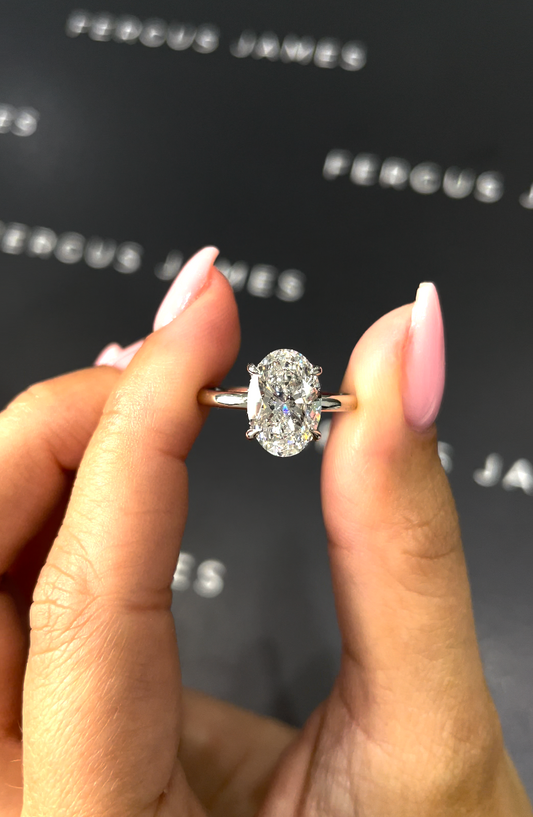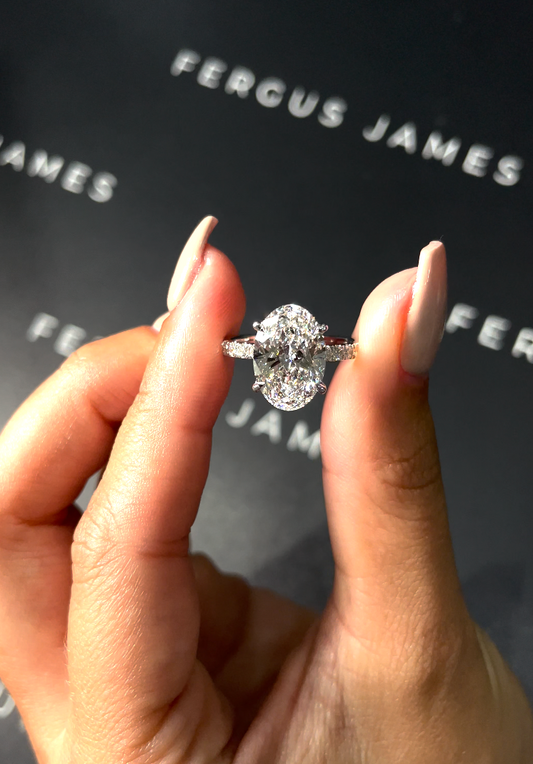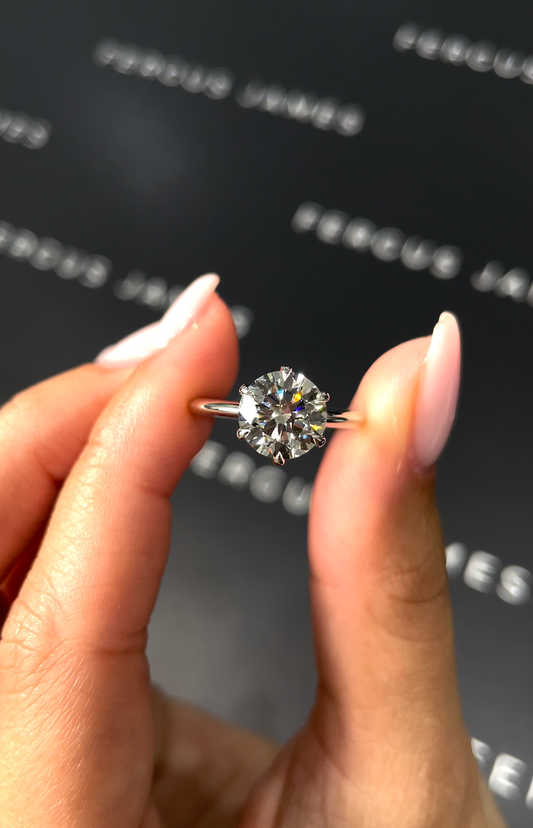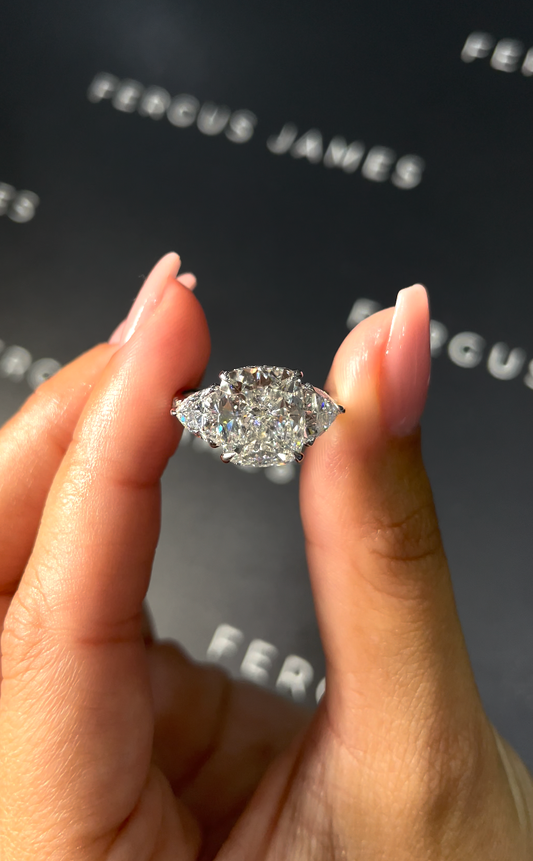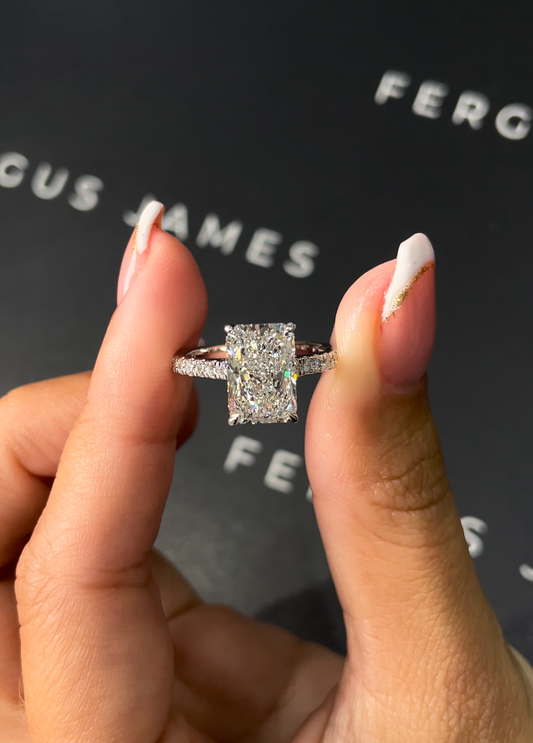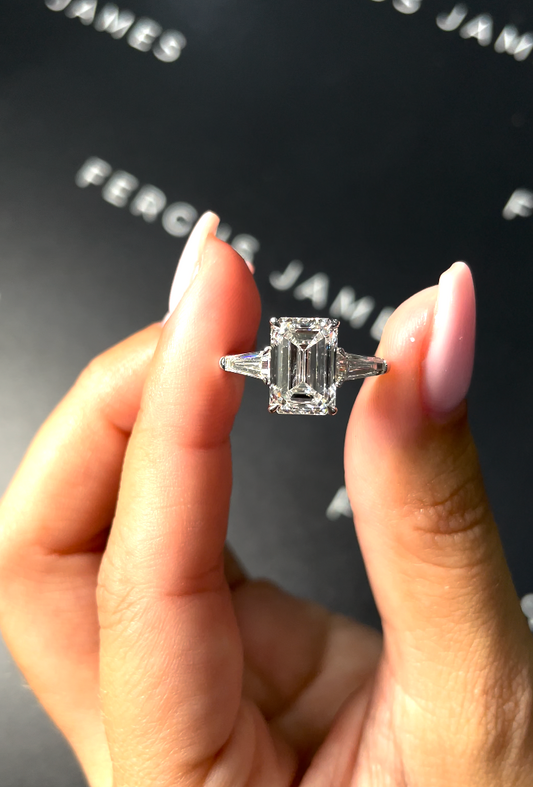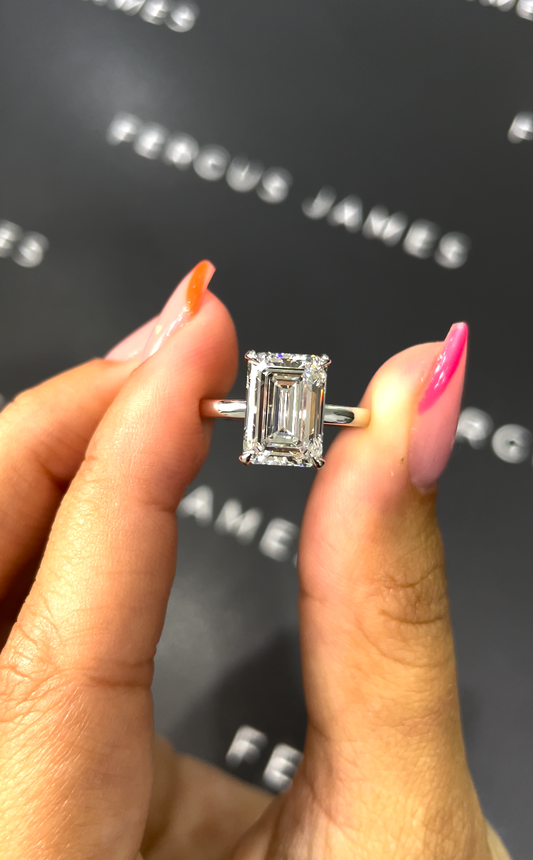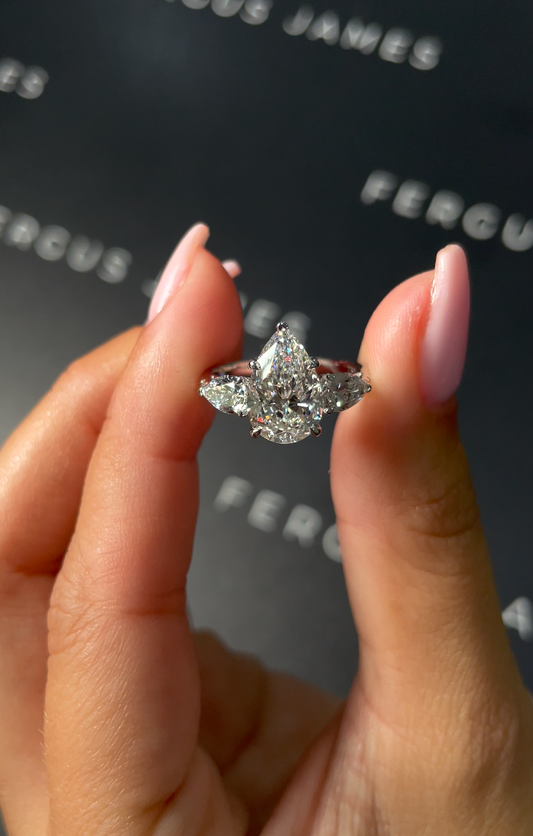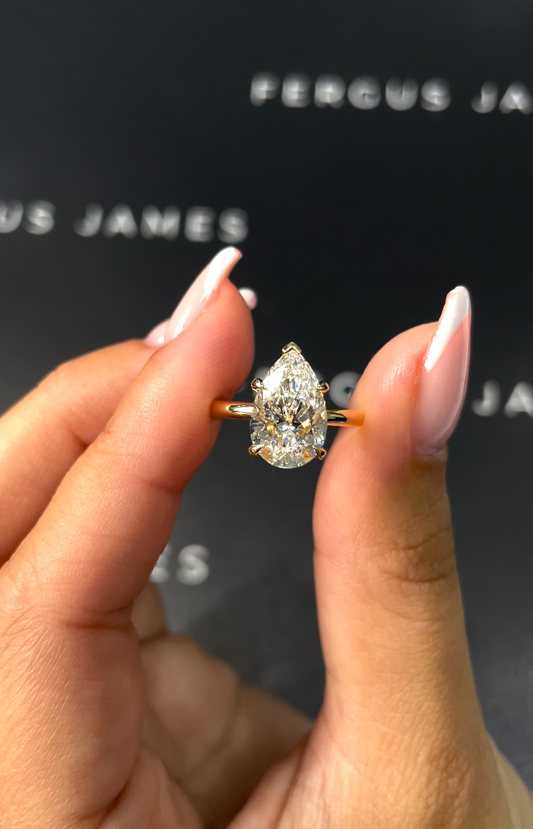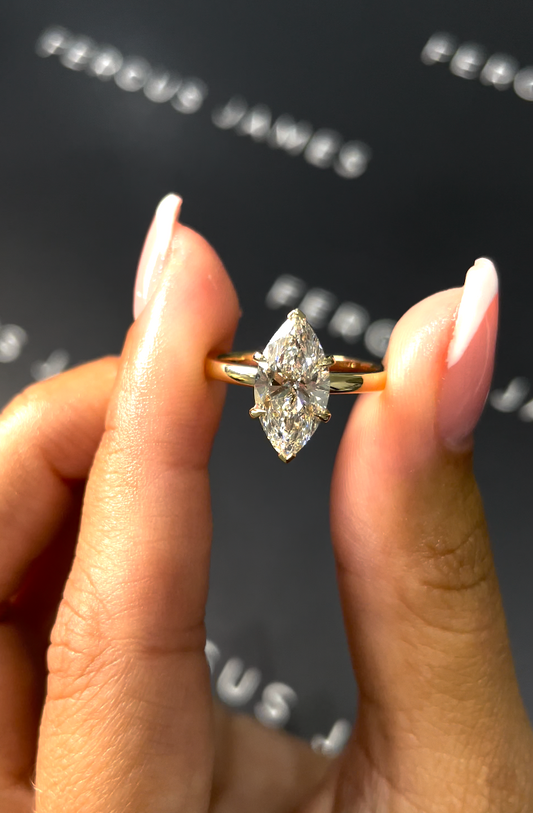Can You Tell a Lab Grown Diamond from a Natural One? Here’s How Experts Do It
Diamonds have always symbolized love, success, and timeless elegance. Over the last decade, another type of diamond has entered the market—lab grown diamonds. These stones are real diamonds with the same physical and chemical properties as natural ones. Yet, many buyers still wonder: can you actually tell a lab grown diamond from a natural one?
To the naked eye, it’s nearly impossible. Both shine with the same brilliance and have identical hardness, fire, and sparkle. Even experienced jewelers often need advanced tools to know which is which. Here’s how experts tell the difference—and why certification plays such an important role when buying either type.


The Naked Eye Test: Why It Doesn’t Work
Most people assume they can tell a lab grown diamond apart from a natural one just by looking at it. That’s not true. Both types of diamonds are made of carbon atoms arranged in the same crystal structure. The sparkle, clarity, and light performance are identical.
Even a professional jeweler, without special equipment, cannot reliably identify the difference. In fact, some lab grown diamonds are so perfectly cut and polished that they can look better than natural diamonds because they often contain fewer inclusions.
This similarity is what makes lab grown diamonds such an appealing choice—they offer beauty and durability equal to natural diamonds, often at a lower price. However, that also means proper verification becomes essential if you want to know exactly what you’re buying.
Advanced Tools That Reveal the Difference
Since the two types of diamonds look the same, experts rely on advanced instruments that can detect subtle structural differences. These differences stem from the environment in which the diamond was formed—deep underground for natural diamonds versus controlled laboratory conditions for lab grown ones.
1. DiamondView
Developed by De Beers, the DiamondView machine uses ultraviolet light to reveal growth patterns that aren’t visible to the naked eye. Natural diamonds show complex, irregular growth structures formed over billions of years. Lab grown diamonds, on the other hand, display more uniform or layered growth patterns, depending on the method used to create them (HPHT or CVD).
2. Spectroscopy
Spectroscopy analyzes how a diamond absorbs and reflects light at different wavelengths. This test can identify trace elements—like nitrogen or boron—that vary between natural and lab grown diamonds. For instance, HPHT diamonds often show specific absorption patterns linked to metallic catalysts used during growth.
3. Fluorescence Analysis
Under ultraviolet light, diamonds can emit a soft glow known as fluorescence. The pattern and intensity can differ slightly between natural and lab grown stones. However, this method isn’t foolproof, as some natural diamonds show similar fluorescence to lab grown ones. It’s usually used together with other tests.
4. Magnification and Inclusion Inspection
Under 10x or higher magnification, trained gemologists can sometimes spot distinctive inclusions.
• Natural diamonds may have mineral crystals or tiny growth features created by intense pressure and heat deep in the Earth.
• Lab grown diamonds may contain metallic inclusions from the growth process, or specific patterns like graining or color zoning that reflect artificial growth conditions.
Growth Patterns: Nature vs. Laboratory
The growth environment shapes the internal structure of every diamond. Natural diamonds form over millions or billions of years under high pressure and temperature inside the Earth’s mantle. Lab grown diamonds are made in weeks or months using two main techniques:
1. HPHT (High Pressure High Temperature)
This method replicates the conditions deep underground. Carbon is placed in a press and exposed to extreme pressure and heat, forming a diamond around a small seed crystal. HPHT diamonds often show a “cubical” or “cross-shaped” growth pattern when viewed under ultraviolet light.
2. CVD (Chemical Vapor Deposition)
CVD diamonds grow layer by layer in a vacuum chamber filled with carbon-rich gas. When the gas is heated, carbon atoms settle on the diamond seed, forming a crystal. This process creates a flat, layered growth pattern, which experts can identify using advanced imaging.
While these differences are invisible without equipment, they are clear indicators for gemological laboratories.
Laser Inscriptions and Certification Numbers
Most reputable lab grown diamonds are laser-inscribed on the girdle (the thin outer edge of the diamond) with a small identification number. This number corresponds to a grading report from a trusted gemological laboratory such as the GIA (Gemological Institute of America), IGI (International Gemological Institute), or GCAL (Gem Certification and Assurance Lab).
The inscription is microscopic and cannot be seen without magnification. It doesn’t affect the diamond’s beauty or structure but serves as proof of authenticity. Natural diamonds may also carry inscriptions, usually linked to their certification report.
By checking the report number online through the issuing laboratory’s database, you can verify whether the diamond is natural or lab grown, confirm its quality grades, and ensure it matches the physical stone.

The Importance of Certification
Whether you choose a natural or lab grown diamond, certification should never be overlooked. A grading report from a trusted laboratory gives you transparent information about the diamond’s identity, quality, and origin.
Here’s what a certification typically includes:
• Diamond type (natural or lab grown)
• 4Cs grading (cut, color, clarity, carat weight)
• Measurements and proportions
• Inclusion mapping
• Fluorescence details
• Growth method (HPHT or CVD) for lab grown diamonds
Without certification, there’s no reliable way to know whether a diamond is natural or lab grown, or if its stated quality grades are accurate. Certification builds trust between the buyer and the jeweler, and ensures complete transparency in the purchase process.
Why It’s Nearly Impossible to Tell Without Equipment
To the average buyer—or even a seasoned jeweler—both diamond types look identical. They both score a 10 on the Mohs scale of hardness, have the same refractive index, and display identical brilliance when cut well. Even electronic diamond testers, which measure thermal or electrical conductivity, can identify diamond versus simulants like moissanite or cubic zirconia, but they cannot distinguish natural from lab grown diamonds.
Only specialized lab instruments can detect the subtle atomic differences between them. This is why jewelers rely on certification and trusted suppliers to ensure proper identification.
Choosing Between Natural and Lab Grown Diamonds
Both types of diamonds offer beauty, durability, and long-lasting value. The decision usually comes down to personal preference and budget.
• Natural diamonds carry a sense of rarity and history. Each one is a unique creation of the Earth, formed over billions of years.
• Lab grown diamonds provide a modern alternative that delivers the same sparkle at a lower price point. They also appeal to those who prefer a more controlled and traceable sourcing process.
Neither is “better” than the other in terms of appearance or strength. The right choice depends on what matters most to you—heritage, sustainability, or value.
Expert Advice: Buy from Trusted Jewelers
When purchasing any diamond, always work with a reputable jeweler who provides full transparency about each stone’s origin and certification. A trustworthy jeweler will:
• Clearly disclose whether the diamond is natural or lab grown
• Provide certification from a recognized laboratory
• Offer magnification tools so you can view the diamond closely
• Educate you on the differences before you make a decision
At Fergus James, every diamond—natural or lab grown—is carefully verified and accompanied by a recognized certificate. Our experts are trained in gemological identification and use advanced technology to ensure full authenticity.
Telling a lab grown diamond from a natural one is a task for professionals equipped with advanced tools. To the naked eye, they are identical in brilliance, structure, and beauty. Only through detailed analysis—using ultraviolet imaging, spectroscopy, or laser inscription checks—can the difference be confirmed.
For buyers, the smartest step is always to rely on certification and trusted expertise. Whether you choose a natural diamond with ancient origins or a lab grown diamond created with modern technology, knowing exactly what you’re buying ensures your investment is as pure and genuine as the diamond itself.





















